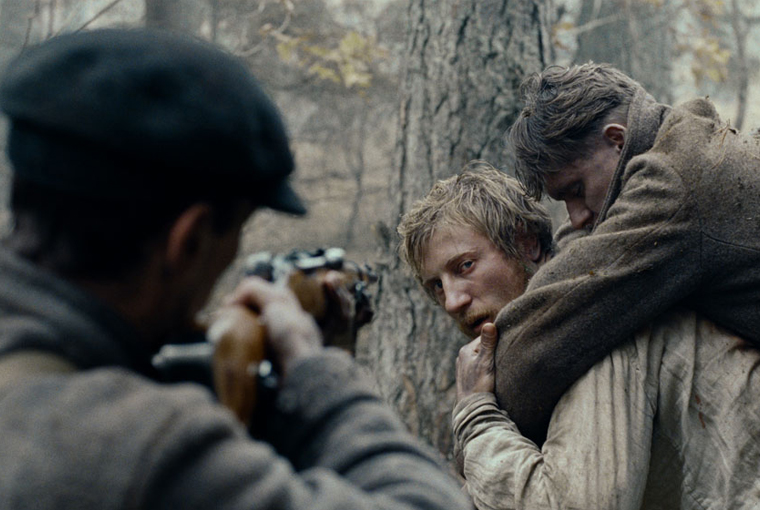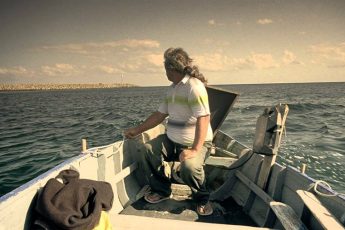Unjust Retribution
Sergei Loznitsa’s In the Fog (V Tumane, 2012)
Vol. 17 (May 2012) by Konstanty Kuzma
In the Fog takes place in the former USSR, during the Second World War. In Nazi-occupied Belarus, innocent Sushenya faces retribution when he is suspected of collaborating with the Germans. The former rail-worker is caught by the Nazis when his co-workers sabotage train tracks used by the Nazis. Instead of being hung together with his fellow rail-workers, the local Nazi official (played by Vlad Ivanov from 4 months, 3 weeks and 2 days) decides to set Sushenya free after he refuses to collaborate. This, as Sushenya notes himself, is no less than a death penalty, as word spreads all too soon about Susehnya’s ominous release. Suspected of treason by all the people in his village (including his wife), Sushenya loses any reason to live. When Burov, a local partisan and childhood friend of Sushenya, tracks down the supposed traitor at his house, Sushenya follows him and his side-kick Voitik willingly. But as Sushenya begins digging his own grave, the three are spotted by the Belorussian police. Burov is shot, and after Sushenya flees the enemy, he comes back for the wounded man. With Voitik holding a gun at him and Burov resting on his shoulders, Sushenya must lead the way towards safety.
The film’s main story line is inter-cut with three flashbacks that introduce us to the three protagonists of the film. Still, the focus is on Sushenya, a candid man who refuses to resort to violence. But benevolence is a virtue foreign to Loznitsa’s universe. Like in his debut feature My Joy, the good will of individuals is undermined by a scrupulous, brutal environment. As Sushenya tries to convince Burov of his innocence, the wounded man dies. Justice is impossible, it seems, whether it is on Sushenya’s terms, or on those of Burov, who risked his life by hunting down Sushenya. It is hard to oversee the hidden symbolism underlying the film, with the pacifist Sushenya being even closer to a holy martyr than was the nameless truck-driver from My Joy.
Indeed, influences from the documentary genre are apparent. The film is slowly paced, each scene being shot with great care and attention to detail. The lead trio (Vladimir Svirski, Vladislav Abashin and Sergei Kolesov) does not only deliver a convincing performance, but was also seemingly casted due to their glum and distinctive looks. Unfortunately, this observational focus often harms the story, as key scenes like the appearance of Vlad Ivanov are cut short in favor of endless camera pans around the forest. Like in My Joy, Loznitsa’s debut feature, In the Fog is a story told visually (and again, cinematographer Oleg Mutu deserves a lot of credit for the film). Burov, Voitik and Sushenya are like biblical personages from an icon, fixed rigidly to the characters they represent. As the camera examines their glum faces, the story unfolds unilaterally, with each of the three companions acting within the boundaries of their clear-cut nature. Many films in this year’s competition seem to celebrate austere film making, with Loznitsa’s film, Abbas Kiarostami’s Like Someone in Love and Mungiu’s Beyond the Hills clearly testing the patience of their audience. But it is hardly the lengthy rhythm of story-telling that is bothersome about In the Fog. With the film lacking the mysticism of a Tarkovsky picture and the haunting reverb of My Joy, one grows content with savoring the images too soon, the relevance of the story lost somewhere amidst the thicket of the forest…




Leave a Comment